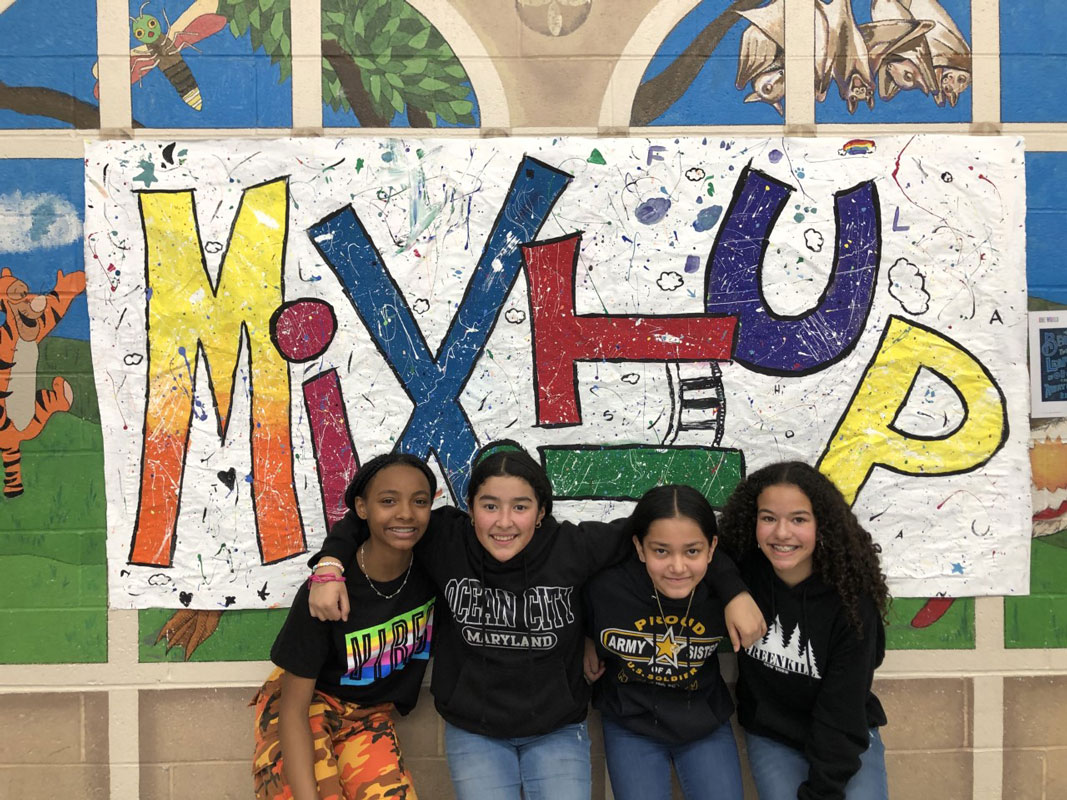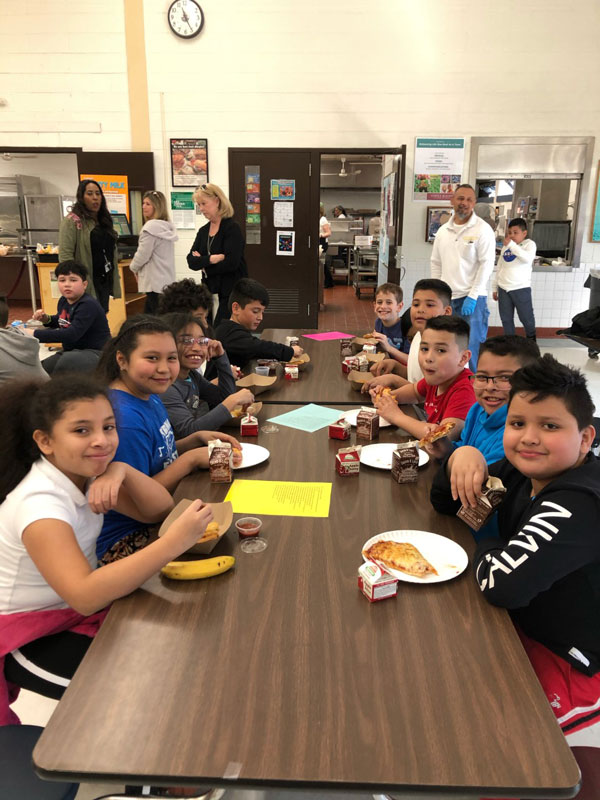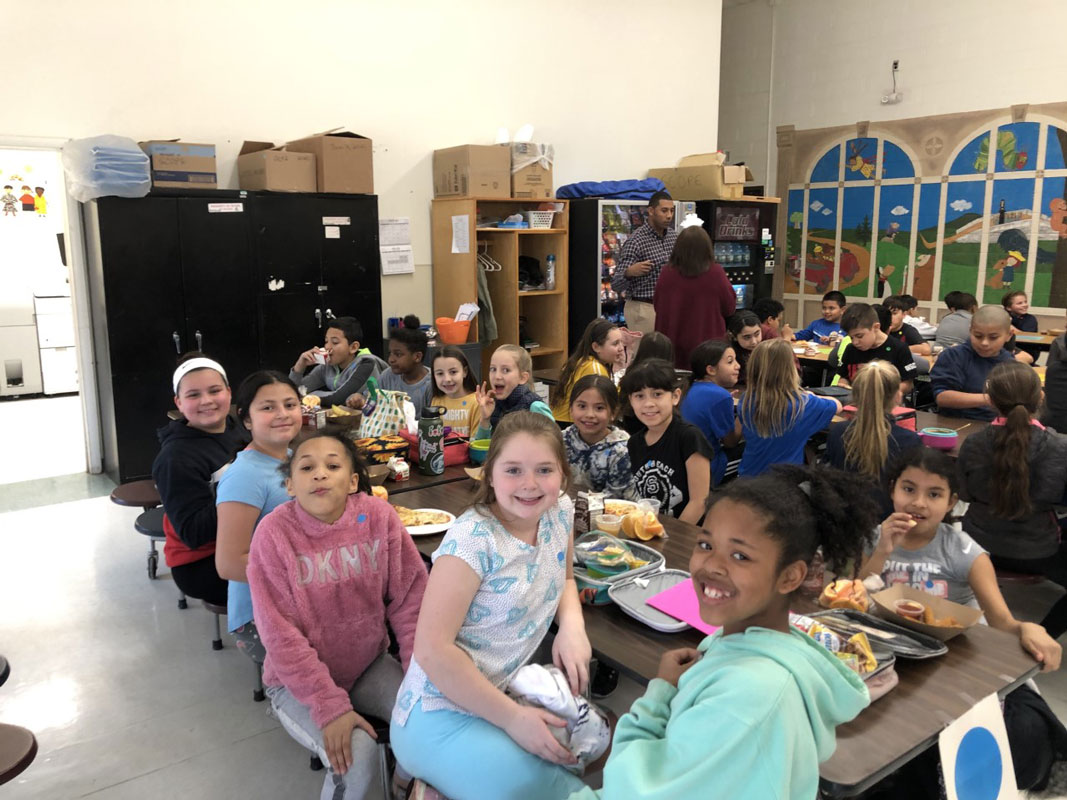Woodhull Intermediate School students joined their counterparts from across the country to celebrate Mix It Up at Lunch Day, breaking out of their typical comfort zones and making a new set of friends.
“Mix It Up at Lunch Day is an international campaign that encourages students to identify, question and cross social boundaries,” according to the website of Teaching Tolerance, a project of the Southern Poverty Law Center.
“No one should be scared to get to know a classmate who is different,” said Julian Watts, Woodhull School’s dean of students. “Including others may help them feel accepted, which prevents teasing and bullying.”
Woodhull students were provided with conversation starters to use at each cafeteria table. There was music and a large “picture frame” that students posed in for a photo.
“Mix It Up at Lunch Day teaches an important lesson to students: Cliques and labels are not the way to learn about people,” said Monita Bell, Teaching Tolerance’s Mix It Up coordinator. “When students meet and see how much they have in common, it helps them to see each other as individuals rather than as only members of a group.”
The focus at Woodhull was on getting students to sit with someone new and helping the youngsters engage in positive conversations.
“Our goals for the initiative centered on inclusion, kindness, empathy and fostering a healthy school climate,” Mr. Watts said.
Woodhull teachers volunteered to help plan Mix It Up at Lunch Day for each of the three grade levels in the building. Students sat at different tables based on the color of a sticker they were randomly given by staff members.
“Students consistently identify the cafeteria as a place in their school where divisions are clearly—and harshly—drawn,” according to the Teaching Tolerance project. “So we ask students to move out of their comfort zones and connect with someone new over lunch. It’s a simple act with profound implications that we encourage educators to include in year-round efforts to promote healthy, welcoming school environments. Studies have shown that interactions across group lines can help reduce prejudice. When students interact with those who are different from them, biases and misperceptions can fall away.”
The Woodhull students enjoyed the new experience and it started paying immediate dividends, which really isn’t surprising.
“Breaking down social barriers can go a long way toward ensuring a school is welcoming for all students,” said Teaching Tolerance Director Maureen Costello. “When students have positive interactions with classmates from different backgrounds, it can help reduce stereotypes, prejudice and bullying.”


